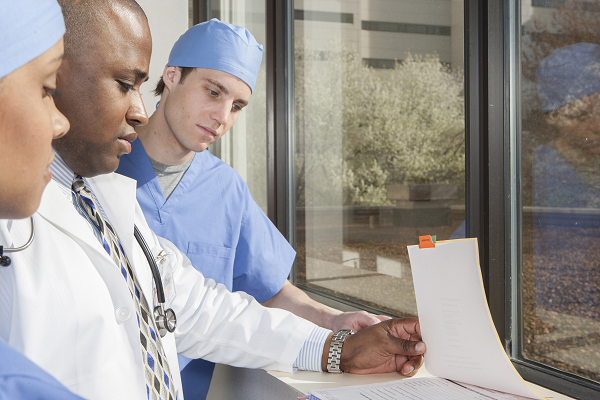What Does Northeast Medical Institute - New Haven Campus Phlebotomy Course & Cna Class Do?
What Does Northeast Medical Institute - New Haven Campus Phlebotomy Course & Cna Class Do?
Blog Article
Some Known Details About Northeast Medical Institute - New Haven Campus Phlebotomy Course & Cna Class
Table of ContentsNot known Facts About Northeast Medical Institute - New Haven Campus Phlebotomy Course & Cna ClassNortheast Medical Institute - New Haven Campus Phlebotomy Course & Cna Class Things To Know Before You Get ThisThe Main Principles Of Northeast Medical Institute - New Haven Campus Phlebotomy Course & Cna Class The 6-Minute Rule for Northeast Medical Institute - New Haven Campus Phlebotomy Course & Cna ClassThe smart Trick of Northeast Medical Institute - New Haven Campus Phlebotomy Course & Cna Class That Nobody is Talking AboutThe smart Trick of Northeast Medical Institute - New Haven Campus Phlebotomy Course & Cna Class That Nobody is Discussing
Nevertheless, the usage of such tools must be accompanied by various other infection prevention and control methods, and training in their use. Not all security devices apply to phlebotomy. Prior to choosing a safety-engineered tool, users need to completely examine readily available devices to determine their ideal use, compatibility with existing phlebotomy practices, and efficacy in safeguarding team and individuals (12, 33).For settings with low resources, cost is a motoring aspect in procurement of safety-engineered tools. Where safety-engineered tools are not offered, knowledgeable usage of a needle and syringe is appropriate.
labelling); transportation problems; analysis of results for medical administration. In an outpatient division or clinic, supply a committed phlebotomy cubicle containing: a tidy surface with 2 chairs (one for the phlebotomist and the other for the client); a hand wash container with soap, running water and paper towels; alcohol hand rub. In the blood-sampling space for an outpatient division or center, offer a comfy reclining couch with an arm rest.
Get This Report about Northeast Medical Institute - New Haven Campus Phlebotomy Course & Cna Class
Ensure that the indications for blood tasting are clearly specified, either in a composed method or in recorded instructions (e.g. in a research laboratory form). Accumulate all the devices required for the procedure and area it within secure and very easy reach on a tray or trolley, guaranteeing that all the things are plainly noticeable.
Present on your own to the patient, and ask the individual to mention their full name. Examine that the lab type matches the client's identity (i.e. match the client's details with the research laboratory type, to make sure accurate identification).
Make the client comfortable in a supine setting (preferably). Location a tidy paper or towel under the patient's arm. Discuss the test to be done (see Annex F) and acquire spoken authorization. The person has a right to refuse a test at any moment before the blood tasting, so it is essential to guarantee that the patient has actually understood the treatment.
Northeast Medical Institute - New Haven Campus Phlebotomy Course & Cna Class for Dummies
Expand the person's arm and examine the antecubital fossa or lower arm. Locate a capillary of a good size that shows up, straight and clear. The representation in Section 2.3, shows usual positions of the vessels, yet numerous variants are feasible. The mean cubital capillary exists between muscles and is Our site typically one of the most simple to pierce.
DO NOT put the needle where blood vessels are diverting, since this raises the opportunity of a haematoma. The blood vessel should show up without using the tourniquet. Situating the vein will certainly assist in determining the proper dimension of needle. Apply the tourniquet regarding 45 finger sizes over the venepuncture website and re-examine the capillary.
Samplings from central lines bring a risk of contamination or incorrect research laboratory examination outcomes. It is acceptable, but not optimal, to attract blood specimens when initial presenting an in-dwelling venous gadget, prior to connecting the cannula to the intravenous liquids.
How Northeast Medical Institute - New Haven Campus Phlebotomy Course & Cna Class can Save You Time, Stress, and Money.
Failure to permit sufficient call time enhances the danger of contamination. DO NOT touch the cleaned up website; in particular, DO NOT put a finger over the blood vessel to guide the shaft of the subjected needle.
Ask the patient to create a clenched fist so the veins are a lot more popular. Go into the capillary swiftly at a 30 degree angle or much less, and remain to introduce the needle along the blood vessel at the easiest angle of entrance - CNA Courses. When enough blood has been collected, release the tourniquet prior to taking out the needle
Not known Details About Northeast Medical Institute - New Haven Campus Phlebotomy Course & Cna Class
Withdraw the needle delicately and apply mild pressure to the site with a clean gauze or completely dry cotton-wool ball. Ask the client to hold the gauze or cotton woollen in area, with the arm extended and raised. Ask the person NOT to bend the arm, because doing so creates a haematoma.

Not known Facts About Northeast Medical Institute - New Haven Campus Phlebotomy Course & Cna Class
Do not press the syringe bettor due to the fact that additional stress enhances the risk of haemolysis. Where possible, maintain the tubes in a rack and move the shelf in the direction of you. Inject downwards into the ideal coloured stopper. DO NOT get rid of the stopper since it will certainly release the vacuum cleaner. If the example tube does not have a rubber stopper, infuse incredibly slowly right into the tube as decreasing the pressure and speed made use of to transfer the sampling minimizes the danger of haemolysis.

Report this page